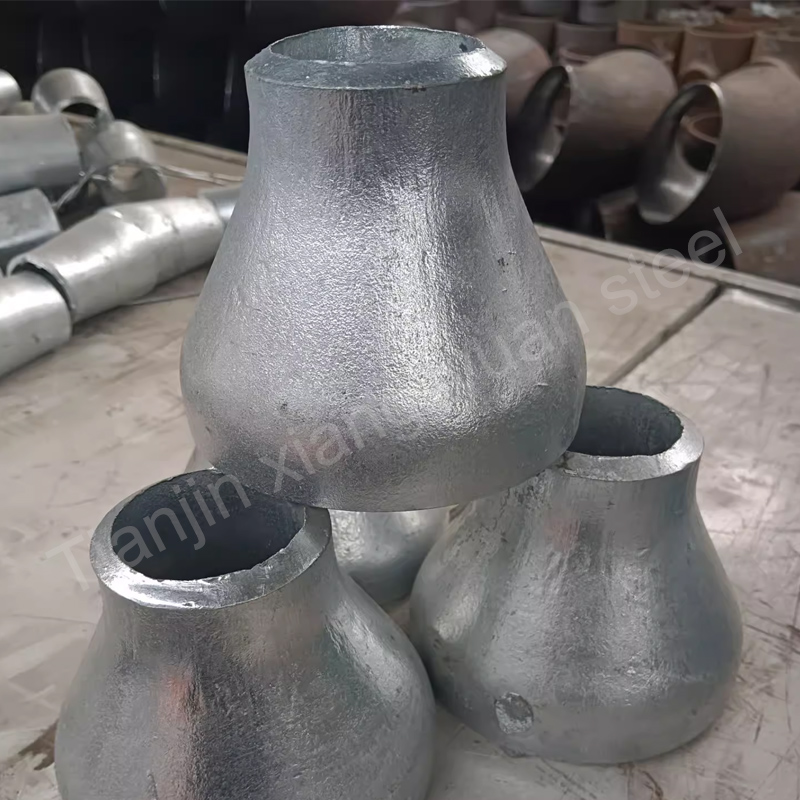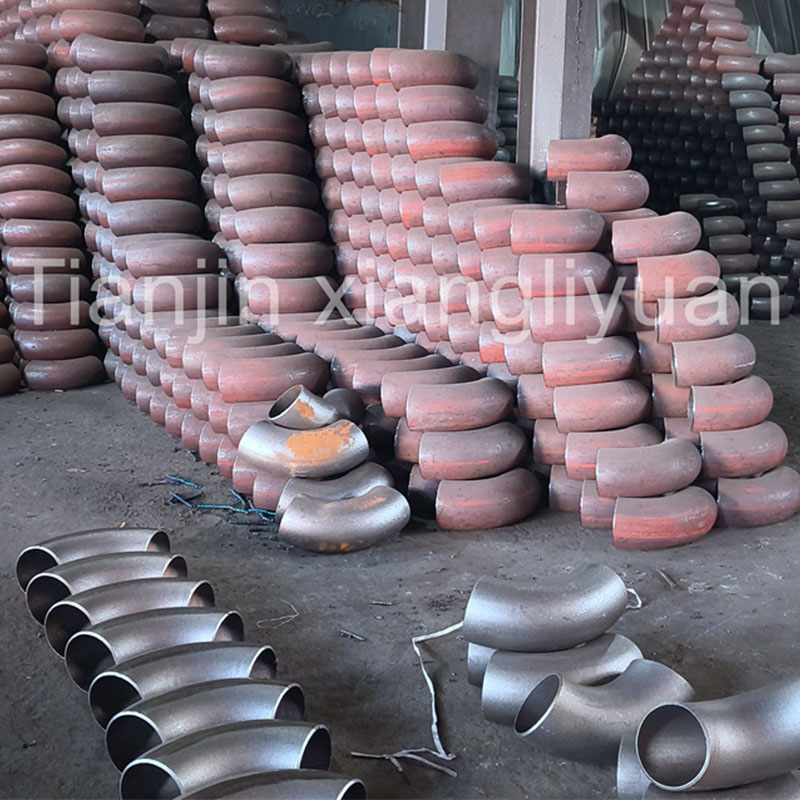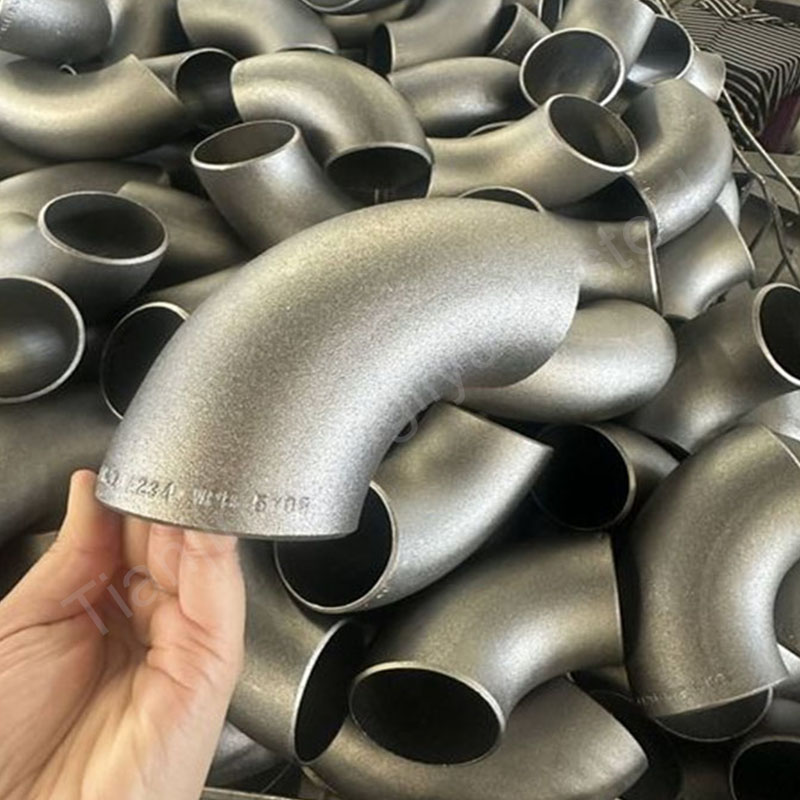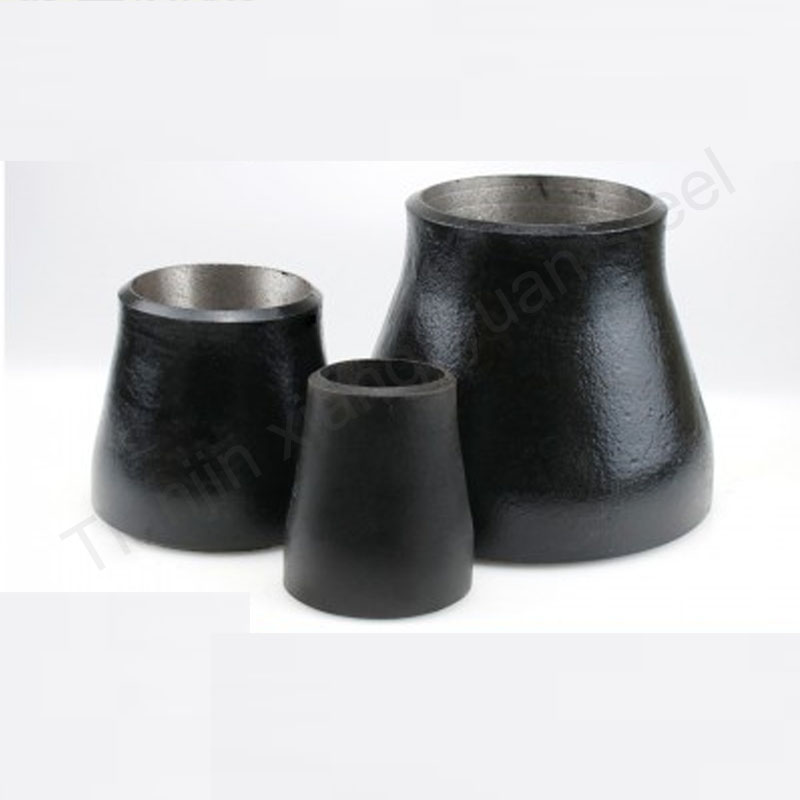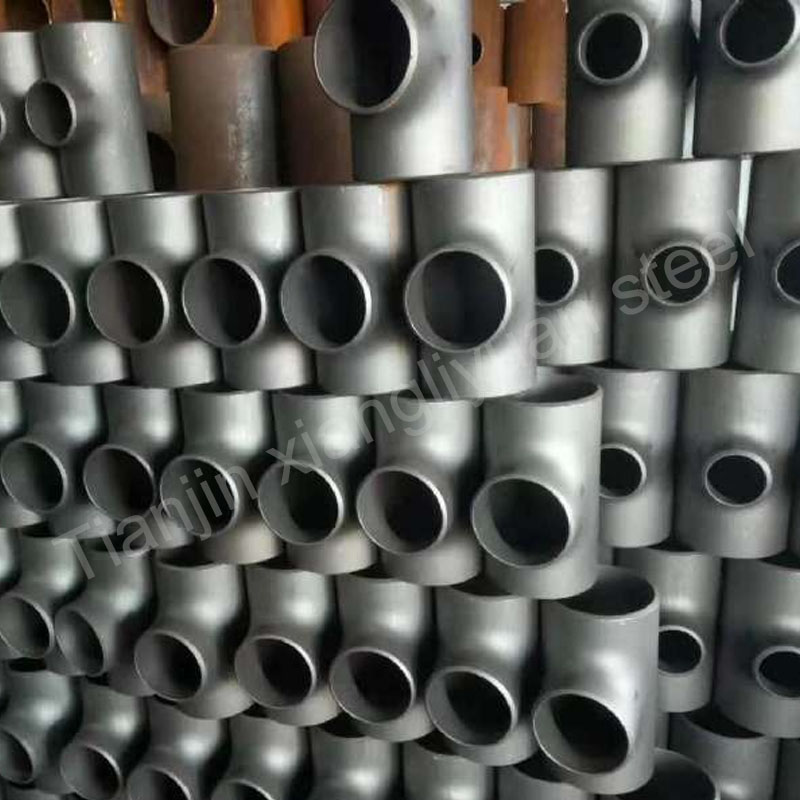Carbon steel reducers refer to fittings used to connect pipes of different diameters in pipeline systems. They are widely used in the fields of petroleum, chemical industry, electricity, construction, etc. The main function of carbon steel reducers is to connect pipes of different diameters, so that the fluid can transition smoothly and reduce the resistance and energy loss during fluid flow.
Carbon steel reducers are usually divided into two forms: concentric reducers and eccentric reducers:
Concentric reducers: The central axis of the pipe wall of the concentric reducer remains consistent, and the diameters at both ends are different. It is suitable for connecting vertical pipes to ensure uniform fluid flow and reduce turbulence.
Eccentric reducers: The centers of the two ends of the eccentric reducer are not on the same axis. They are often used for horizontal pipe connections, which can avoid liquid accumulation in the pipe and are conducive to the discharge or transportation of media with solid particles.
The material of carbon steel reducers is mainly classified according to its carbon content and the alloy elements added. The common materials are as follows:
1. Ordinary carbon steel
Ordinary carbon steel can be divided into three categories: low carbon steel, medium carbon steel and high carbon steel according to the carbon content.
Low carbon steel (carbon content ≤ 0.25%): also known as soft steel, has good plasticity, toughness and weldability, suitable for general pressure and low temperature pipelines, such as Q235, A36, etc.
Medium carbon steel (carbon content 0.25%-0.60%): Medium carbon steel has higher strength, but slightly poorer toughness and weldability, and is usually used in pipeline systems that withstand greater pressure, such as 45 steel.
High carbon steel (carbon content ≥ 0.60%): High carbon steel has high strength, but poor ductility and weldability, and is generally used in occasions with high requirements for hardness and wear resistance.
2. High-quality carbon steel
High-quality carbon steel has higher purity, less internal impurities, and more uniform performance. Common high-quality carbon steels include 20#, 35#, 45#, etc., which are suitable for high-demand pipeline systems, such as high-pressure pipelines or high-temperature resistant occasions.
3. Carbon manganese steel
Carbon manganese steel is made by adding manganese to carbon steel to improve the strength, wear resistance and hardness of the steel while maintaining good plasticity and toughness. Commonly used carbon manganese steels include Q345B, Q345D, etc., which are often used in pipeline systems that require higher strength but still require a certain degree of ductility.
4. Low alloy high strength steel
Low alloy high strength steel adds a small amount of alloying elements (such as chromium, molybdenum, nickel, etc.) to carbon steel to improve the strength, wear resistance and corrosion resistance of the steel. Common low alloy high strength steels include 16Mn, 15CrMo, 12Cr1MoV, etc. These materials are often used in high temperature and high pressure pipelines such as petroleum and chemical industries.
5. High temperature carbon steel
High temperature carbon steel is a material specially designed to withstand high temperature environments. It has good creep resistance and oxidation resistance at high temperatures. Common materials include ASTM A106 and ASTM A234 WPB. This type of material is suitable for use in pipeline systems under high temperature conditions such as power plants and refineries.
6. Corrosion-resistant carbon steel
By adding an appropriate amount of alloying elements (such as copper, nickel, chromium, etc.) to carbon steel, the corrosion resistance of the steel can be improved. Common corrosion-resistant carbon steel materials include Corten steel, Weathering steel, etc. These materials are usually used outdoors or in places with harsh corrosive environments, such as bridges, building exterior walls, etc.
7. Coated carbon steel
In order to improve the corrosion resistance of carbon steel reducers, their surfaces are sometimes galvanized, aluminum-plated or coated with anti-rust paint. This type of carbon steel reducer is mainly used in places with high anti-corrosion requirements, such as outdoor pipelines, marine engineering, etc.
8. Cold-rolled and hot-rolled carbon steel
Carbon steel reducers can be divided into cold-rolled and hot-rolled materials according to different processing techniques. Hot-rolled carbon steel is usually used for thick-walled pipes and high-pressure pipeline systems, while cold-rolled carbon steel is used for thin-walled and low-pressure pipeline systems. Cold-rolled products usually have higher surface finish and dimensional accuracy.
There are many international and national standards for the production and quality requirements of carbon steel reducers. The following are the common ones:
GB/T 12459 (Chinese standard): Applicable to the manufacturing requirements of steel butt-welded pipe fittings, covering the size, material, and process requirements of carbon steel reducers.
ASTM A234 (American standard): specifies the material and size requirements of steel pipe fittings, mainly used for transporting high-temperature and high-pressure pipelines such as oil and natural gas.
ASME B16.9: This is the standard of the American Society of Mechanical Engineers, which specifies the size, tolerance and material of butt-welded pipe fittings, covering reducer pipe fittings of different materials.
DIN 2616 (German standard): This standard covers the size, design and use requirements of reducer pipe fittings.
The size of carbon steel reducer is usually expressed by the outer diameter of its two ends, for example, DN100×80 means that the outer diameter of the large end is 100 mm and the outer diameter of the small end is 80 mm. Common size standards include imperial and metric:Imperial size: for example, 2″×1½”, means that the large end is 2 inches and the small end is 1½ inches.
Metric size: for example, DN200×150, means that the diameter of the large end is 200 mm and the diameter of the small end is 150 mm.
The wall thickness of carbon steel reducers usually follows the standards of the pipeline system, such as Sch40, Sch80, etc. These wall thickness standards can ensure the safe use of pipelines under specific pressures and temperatures.
Carbon steel reducers are widely used in industrial fields where the diameter of the pipeline needs to be changed. The following are some common applications:
Petrochemical industry: Carbon steel reducers are often used in oil and natural gas pipelines to help regulate fluid pressure and ensure the stable operation of the pipeline system.
Power engineering: In the power system, reducer pipes are used to transport media such as steam and cooling water to meet the requirements of different pipeline diameters.
Construction industry: Carbon steel reducers are widely used in building water supply, gas supply, drainage and other systems to ensure smooth flow of media and reduce flow resistance.
Pharmaceutical and food industries: In these industries with high hygiene requirements, carbon steel reducers are used to transport liquids such as raw materials and finished products for medicines and food processing.
Carbon steel reducers have the following significant advantages:
High strength: Carbon steel materials have good tensile strength and can withstand high working pressures.
Strong weldability: Carbon steel reducers can be connected by various welding methods, with excellent welding performance, suitable for complex pipeline systems.
Relatively low cost: Compared with stainless steel and alloy steel, carbon steel reducers have lower costs and are suitable for large-scale industrial applications.
Corrosion resistance: By adding anti-corrosion coatings or linings, the corrosion resistance of carbon steel reducers can be improved and the service life can be extended.
In general, carbon steel reducers play an important role in industrial production and pipeline construction. With the continuous improvement of material performance and standards in modern industry, the application areas of carbon steel reducers will continue to expand in the future and develop in the direction of higher performance and more environmental protection.

